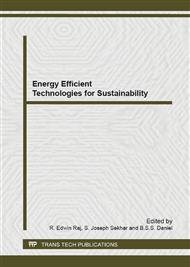p.301
p.308
p.313
p.317
p.323
p.329
p.334
p.338
p.344
Optimization Techniques for the Economic Dispatch Problem in Various Generation Plant
Abstract:
The dynamic economic dispatch (DED) occupies important place in a power systems operation and control. It aims to determine the optimal power outputs of on-line generating units in order to meet the load demand and reducing the fuel cost. The nonlinear and non convex characteristics are more common in the DED problem. Therefore, obtaining a optimal solution presents a challenge. In the proposed system, firefly algorithm, Adaptive simulated annealing algorithm, artificial bee colony (ABC) algorithm a recently introduced population-based technique is utilized to solve the DED problem. A general formulation of this algorithm is presented together with an analytical mathematical modeling to solve this problem by a single equivalent objective function. The results are compared with those obtained by alternative techniques proposed by the literature in order to show that it is capable of yielding good optimal solutions with proper selection of control parameters. Keywords: ABC-Artificial Bee Colony Algorithm, DED-Dynamic Economic Dispatch, FA-firefly algorithm, ASA-Adaptive Simulated annealing algorithm
Info:
Periodical:
Pages:
323-328
Citation:
Online since:
September 2013
Authors:
Price:
Сopyright:
© 2013 Trans Tech Publications Ltd. All Rights Reserved
Share:
Citation:


